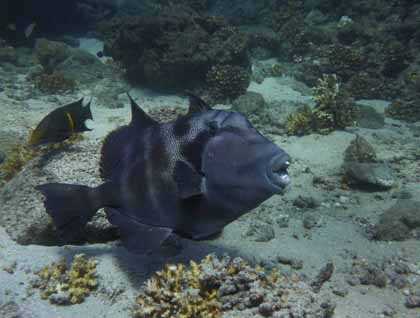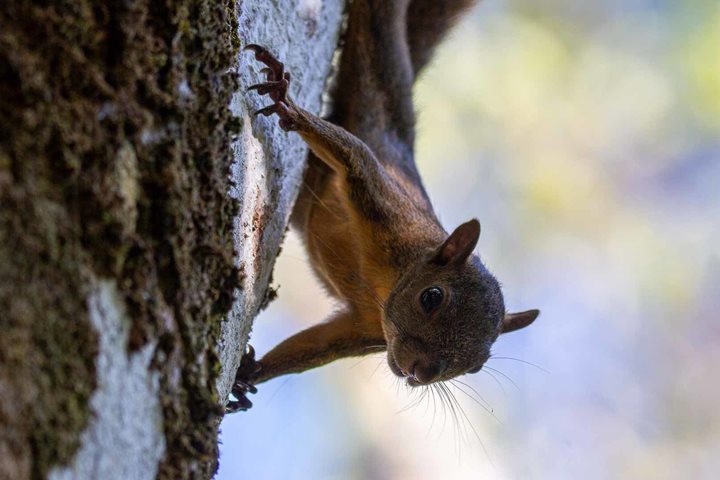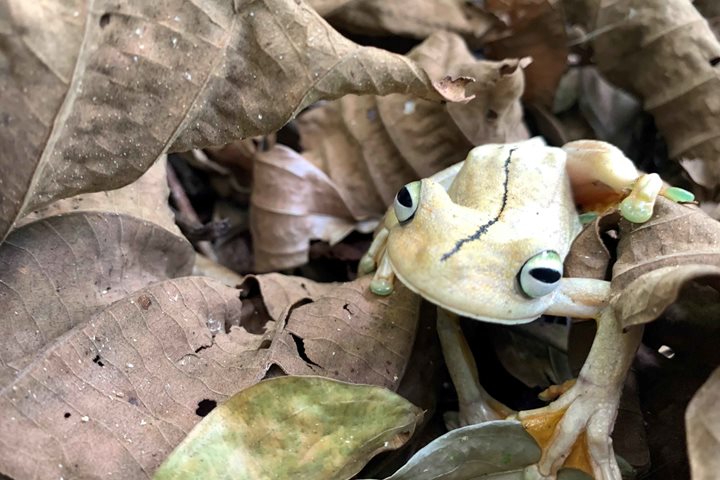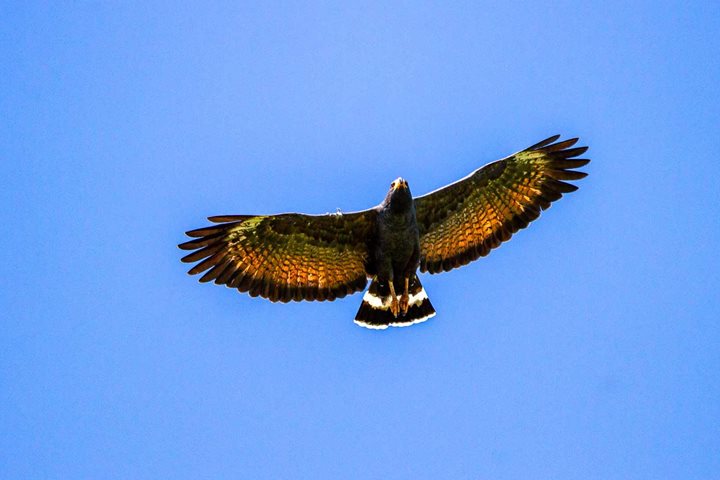National Geographic Sea Lion cruised its way from Costa Rica to Panama during the night. It was escorted by a night sky loaded with stars. The Southern Cross could be seen on the starboard side. Little by little the stars began to vanish as the first sun rays began to show up.
The sun announced his arrival with a spectacular orange sky. The topography of Coiba National Park began to be revealed. Groups of laughing gulls flew by our side while a pod of pantropical dolphins were bow riding our ship. With this start, it was going to be a great day!
After the morning update given by our expedition leader, several guests gathered up at the bridge deck aft for their morning stretch class. A cool breeze was sent as they concluded their class right before they heard the announcement for breakfast.
The anchor was dropped next to a lovely little islet. We had arrived to our morning destination; a small islet known as Granito de Oro (“little grain of gold”). The islet is part of the 51,000 hectares of land that the national park has. The area of Coiba National Park covers an extension of 271,000 hectares. In its waters we can find the second biggest coral reef of the tropical eastern Pacific. This park was kept off limits for visitors between the years 1915 to 2000, when it was used as a jail.
With our snorkeling gear in hand, we landed in this little islet and went snorkeling. We had perfect conditions for this activity. Right inside the water, we enjoyed the diversity of fish of the area. White-tipped reef sharks, bicolored parrot fish, blunthead triggerfish, big eyed jacks, king angel fish, and many other species swam around our snorkelers.
It was a great morning and as much as we didn’t want to, we had to get back onboard our ship. A lot of nautical miles had to be covered before we reached Thursday’s destination: the Panama Canal.







